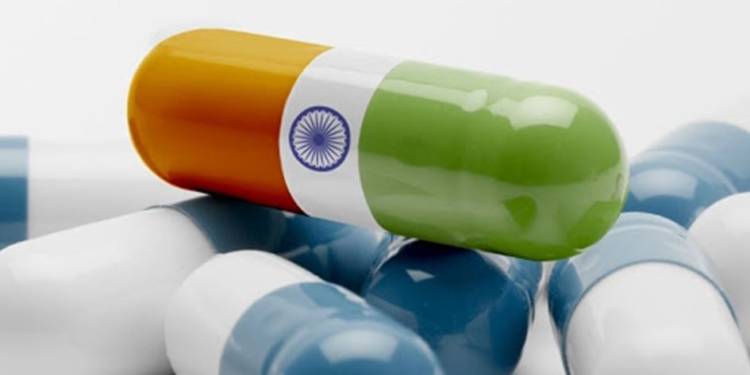A few weeks ago, we at TFIPOST wrote that the Pharmaceutical Sector is set to become a new Information Technology sector for India, as the exports are expected to grow exponentially amid the Coronavirus pandemic, given the fact India is the largest manufacturer and one of the largest exporters of generic drugs and vaccines.
Pharmaceutical Sector still lags miles behind the IT sector as its exports are a mere 20 billion dollars compared to around 100 billion dollars exports by the latter. However, the pharmaceutical sector has better growth prospects in the future as the pandemic is expected to last throughout the year and more Indian companies’ drugs have been approved by USFDA for sale in the American market.
In the month of May this year, pharmaceutical exports increased to reach 14,959 crore rupees compared to 11,758 crore rupees in May last year, registering stupendous growth of 19 percent. The industry expects export for the full year to be around 24-25 billion dollars, 20 percent more compared to the export figure of last year. Last year, growth was in single-digit at 7.57 percent while this year it is estimated to be in double-digits, at nearly 20 percent.
In April this year, growth was at a mere 0.25 percent given the lockdown and low demand of non-COVID-19 drugs. But, with the easing of lockdown and pick up of exports in all other sectors, the positive trend is expected to continue throughout the year. “We believe the trend may continue this year owing to the demand for affordable generics from our country,” Pharmaceuticals Export Promotion Council of India (Pharmexcil) director-general Ravi Uday Bhaskar said.
In the last few months, Indian pharmaceutical giants have ramped up production of drugs like Hydroxychloroquine (HCQ), Lopinavir, Ritonavir, and Dexamethasone as their demand rise across the world in anticipation of possible Coronavirus disease cure. Indian companies, given their capacity to produce the generic drugs at competitive prices, could become the manufacturing hub of Remdesivir, Favipiravir, Tocilizumab- the drugs Western scientists are using to treat the Covid-19 disease.
“All these factors may boost the exports of Indian pharmaceuticals this year. We are expecting that the exports would be around $24-25 billion. In FY 2019-20, the exports grew 7.57% to $20.58 billion,” said Bhasker.
Like the last two decades have been defined by the rise of the Indian IT sector, it seems, the next decade is going to be of the pharmaceutical industry. The industry has never enjoyed such favorable domestic and global environments and the pharmaceutical companies would definitely capitalize on this.
Currently, the only problem faced by the pharmaceutical industry is the possible ban on import of Active Pharmaceutical Ingredients- the raw material for manufacturing drugs, from China. API imports from China account for 70 percent of total API imports. However, the European Union could compensate for the ban of Chinese imports.
“It is hoped imports of raw materials may not be affected [from China]. However, with the European Union (EU) taking rapid strides in reviving bulk drug industry, we may not have much of difficulty in feeding our formulation industry,” said Bhasker.
Currently, the industry has an annual revenue of around 1.3 lakh crore rupees or 33 billion United States dollars. The largest players are Dilip Shanghvi led Sun Pharmaceutical, Lupin Limited of Desh Bandhu Gupta, Dr. Reddy laboratories of Reddy’s, Cipla, Aurbindo Pharma, Piramal Enterprise, Glenmark Pharmaceutical, Torrent, Biocon, and Serum Institute. Many Indian billionaires made their fortunes in the pharmaceutical sector, and it is arguably the largest sector in terms of the number of billionaires after the Information Technology-BPM sector.
India is one of the largest exporters of pharmaceuticals. The industry grew at double-digit in the last decade except for the last one or two years, when the growth slowed due to regulations put by the government and other disruptive reforms. In the next few years, the pharmaceutical industry has the potential to replace IT as the largest export sector and contribute billions of dollars to India’s foreign exchange reserves every year.


































